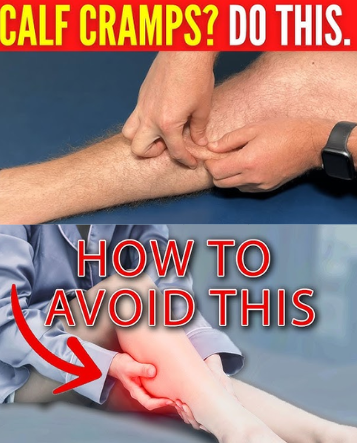
If you’ve ever been jolted awake in the middle of the night by a sudden, sharp muscle spasm in your leg, you know exactly how excruciating a leg cramp can be. Often called “charley horses,” these cramps strike without warning — during workouts, sleep, or even while sitting still — and can stop you in your tracks. While they’re usually caused by muscle fatigue, dehydration, or electrolyte imbalance, the good news is that they can often be prevented with a few smart lifestyle changes.
Here are nine proven, effective strategies to help you keep leg cramps at bay and get back to moving without pain.
Stretch Daily to Keep Muscles Flexible
Tight muscles are more prone to cramping, so daily stretching is your first line of defense. Simple routines that target the calves, hamstrings, and quadriceps help improve flexibility, boost circulation, and keep muscle fibers loose. Just a few minutes of stretching each morning and after workouts can drastically cut down on the frequency and severity of cramps. Think of it as routine maintenance for your muscles — like oiling a door hinge so it doesn’t squeak.
Stay Hydrated to Maintain Electrolyte Balance
Your muscles rely on a delicate balance of electrolytes — sodium, potassium, calcium, and magnesium — to contract and relax properly. Even mild dehydration can throw that balance off, increasing cramp risk. Keep a reusable water bottle nearby and sip throughout the day, especially before and after exercise. If you’re sweating heavily, consider an electrolyte drink to replenish what’s lost.
Eat Foods Rich in Potassium, Magnesium, and Calcium
Nutrition plays a huge role in muscle health. Potassium-rich foods like bananas, sweet potatoes, and spinach help regulate contractions. Magnesium sources such as almonds, avocados, and dark chocolate support muscle relaxation. Calcium from dairy, tofu, and leafy greens keeps contractions controlled and smooth. Building these nutrients into your meals ensures your muscles have the fuel they need to work without seizing up.
Avoid Sitting or Standing in One Position Too Long
Staying still for extended periods can cut off circulation and tire out your muscles, both of which can lead to cramps. If your job keeps you at a desk, set a reminder to stand, walk, or stretch every 30–60 minutes. If you stand for work, shift your weight often or take brief sitting breaks. Movement keeps blood flowing and muscles engaged, reducing cramp triggers.
Video : How to relieve tight, cramping, and spasming muscle.🦵
Massage to Loosen Tight Muscles
When a cramp hits, massaging the affected muscle can help break the spasm and encourage blood flow. Firm, steady pressure with your hands or a massage roller can ease tension and speed recovery. Even outside of cramp episodes, occasional leg massages can keep muscles supple and less likely to knot up.
Use Heat or Cold for Relief
For immediate comfort, apply heat to relax tight muscles or cold to numb pain and reduce inflammation. A warm towel, heating pad, or hot shower can encourage circulation and muscle release. Ice packs work best after activity when swelling or irritation is present. Both methods are simple, natural tools you can use at home without special equipment.
Wear Supportive Footwear
Your feet set the foundation for your entire body. Shoes without proper arch support or cushioning can strain the leg muscles, eventually triggering cramps. Invest in well-fitting footwear designed for your activity level, whether that’s running, walking, or standing all day. Supportive shoes reduce the stress that travels up your legs and helps keep muscles stable.
Practice Relaxation to Ease Muscle Tension
Stress tightens more than just your shoulders — it can cause subtle, constant tension in your legs, too. Relaxation techniques like deep breathing, meditation, or gentle yoga help lower overall muscle tension and improve circulation. The calmer your body, the less likely it is to spasm unexpectedly.
See a Doctor if Cramps Are Frequent or Severe
Occasional cramps are normal, but if they happen often or wake you up night after night, there could be an underlying medical issue such as nerve compression, circulation problems, or nutrient deficiencies. A healthcare professional can run tests, check your mineral levels, and recommend targeted treatments to get to the root of the problem.
Video : Get Rid of Leg Cramps in Minutes! Dr. Mandell
Conclusion
Leg cramps might seem random, but they often stem from preventable causes — tight muscles, dehydration, poor nutrition, or prolonged inactivity. By stretching regularly, staying hydrated, eating the right nutrients, wearing supportive shoes, and managing stress, you can dramatically lower your chances of experiencing them. And if cramps persist, getting medical guidance ensures you address any deeper issues early.
Your muscles work hard for you every day. Treat them well, and they’ll return the favor — without the painful surprise of a midnight cramp.


